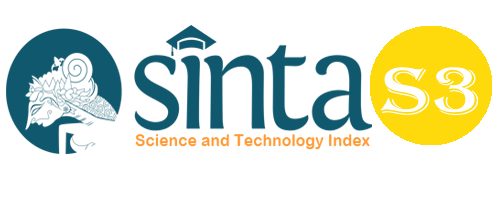Language Attitudes and Application in the movie The Amazing Spiderman: Sociolinguistics Studies
Abstract
The purpose of this study are to analyze the types of language attitudes occurs in the movie Amazing Spiderman and the type of meaning from the source taken from the official movie script. The method is used in this study is descriptive analysis method. By using Perloff, (2003) theory the researcher found that there are two types of language attitudes occurs in the movie which are attitudes to Vernacular and attitude to standard English. Vernacular is using a language or dialect native to a region or country rather than a literary, cultured, or foreign language of relating or being a nonstandard language or dialect of a place, region, or country. Standard English is the English used by educated people with relatively high social status. Moreover, Attitudes to language are important to sociolinguistic for a study of reasons.
Keywords
Full Text:
PDFReferences
Albalawi, B.R. (2014). Student attitudes toward intensive English Program at CSCED and their effects on academic achievement. International Journal for Innovation Education and Research, 2 (10), 139 - 157.
Aldosari, H.S. (2014). The entwined effects of attitude, motivation and gender on EFL learning: A correlation study. Journal of Studies in Literature and Language, 8 (1), 1 - 5.
Braine, G. (Ed).(1956). Teaching English to the world: history, curriculum, and practice. London: Lawrence Erlbaum Associates Publishers.
Creswell, J.W. (2012). Research design: qualitative, quantitative, and mixed methods approaches. London: SAGE Publications, Inc.
Denzin, Amis: N. K., & Lincoln, Y. S. (Eds.). (2008). The landscape of qualitative research. Thousand Oaks, CA: Sage
Fasold,, R. (1983). Variation in the Form and Use of Language: A Sociolinguistics. Reader: Washington, George town University Press.
Gumperz. 1972, Language in Social Groups,United Kingdom, Standford University Press.
Holmes Janet, 1992, An Introduction to Sociolinguistics, Geoffrey Leech and Mick Short, Lancaster University
Hudson, R.A. (1985). Sociolinguistics. Cambridge: University Press.
Kridalaksana. H. (2001). Kamus Linguistik. Jakarta: PT. Gramedia Pustaka Utama.
Lauder, A. (2008). The status and function of English in Indonesia: A review of key factors. Makara, Social Humaniora, 12(1), 9 - 20.
McCoach, D.B., Gable, R.K., & Madura, J.P. (2013). Insrument development in the affective domain. New York: Springer.
Miles, M.B., Hubberman, A.M., and Saldana, J. (2014). An expanded sourcebook: qualitative data analysis (3rded.). Thousand Oaks: Sage Publication.
Perloff, R. M. (2003). “The Dynamics of Persuasion: Communication and Attitudes in the 21st Century (2nd ed.),Indiana USA, Journal of Health Communication
Purba, N. et al. (2020). Language Acquisition of Children Age 4-5 Years Old in TK Dhinukum Zholtan Deli Serdang. P.19-24
Sugiono. (2013). Metode penelitian kombinasi (mixed methods). Bandung: Alfabeta.
Wati, S. (2018). Language attitude of undergraduate students towards English at English Education Department. LingTera, 5 (1), 10 - 18.
doi:http://dx.doi.org/10.21831/lt.v5i1.8583.
DOI: https://doi.org/10.33258/birci.v5i3.5878
Article Metrics
Abstract view : 66 timesPDF - 25 times
Refbacks
- There are currently no refbacks.

This work is licensed under a Creative Commons Attribution-ShareAlike 4.0 International License.

This work is licensed under a Creative Commons Attribution-ShareAlike 4.0 International License.

_.gif)

















_.gif)



